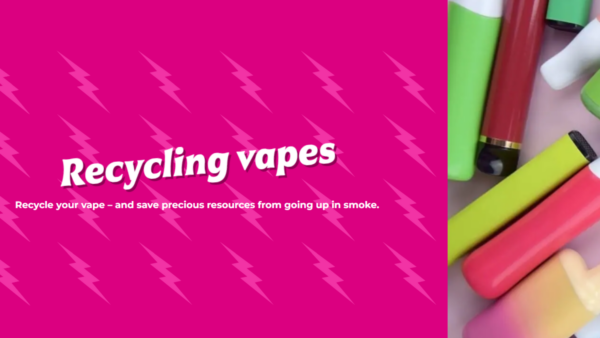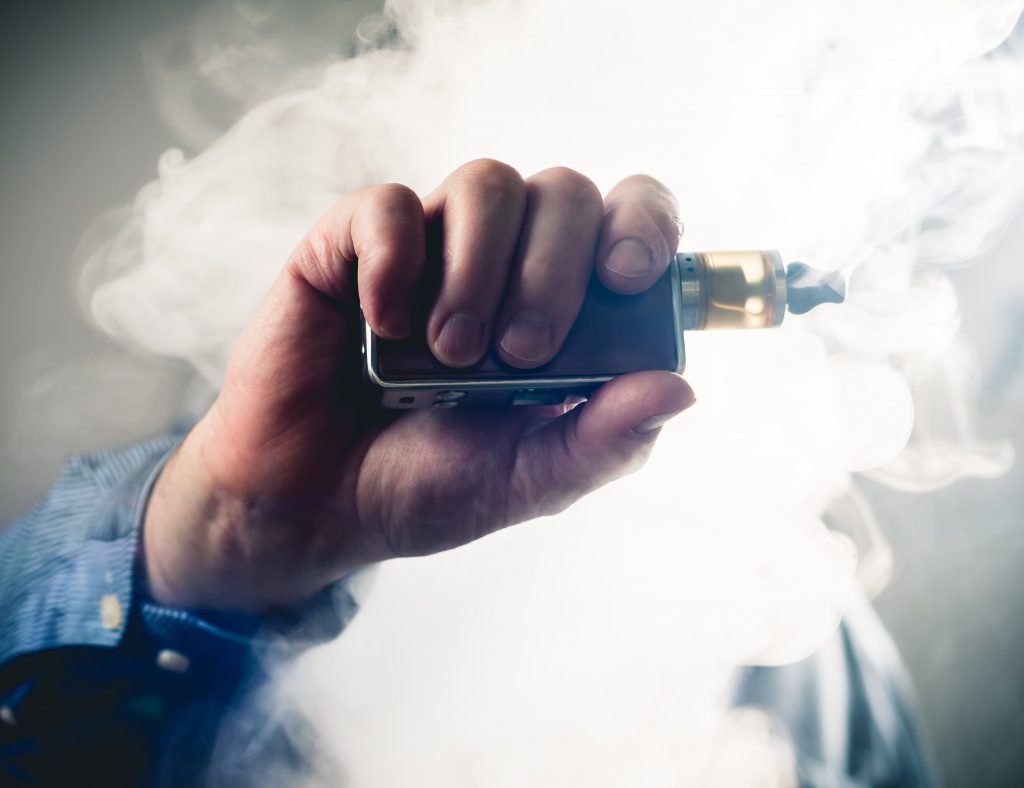What is Vaping?
Nicotine vaping is substantially less harmful than smoking. It’s also one of the most effective tools for quitting smoking.
Vaping is not completely harmless and we only recommend it for adult smokers, to support quitting smoking and staying quit. If you don’t smoke, don’t vape. Vaping is also not at all recommended for children – it is not risk free.
There are many different types of vapes available and costs can vary, but they’re much cheaper than cigarettes. You can find out about the different types and what might work best for you by talking to a stop smoking advisor or by visiting your local vape shop.
Vaping is absolutely not recommended for non-smokers and young people under 18 years because it is not completely harmless. But if you are a tobacco smoker then switching will almost certainly reduce your risks of cancer, COPD and a range of smoking-caused diseases.
Vapes are most effective if used with support from a trained stop smoking advisor. All of our stop smoking services in the North East are “Vape friendly” and some can even provide you with a vape starter kit for free. Find your local Stop Smoking Service.
Want to find out more – see the Q&A below – source NHS.uk
What are vapes and how do they work?
Vapes are electronic devices that let you inhale nicotine in a vapour, instead of smoke. This is done by heating a solution (e-liquid) that typically contains propylene glycol, vegetable glycerine, flavourings and nicotine.
E-liquids come in different nicotine strengths, so you control how much nicotine you need to help with cravings and other withdrawal symptoms, such as feeling irritable and having low mood.
Nicotine itself has been used for many years in medicines to help people stop smoking. Many thousands of people in the UK have stopped smoking with the help of a vape. There’s good evidence that they can be effective.
Did you know?
You’re roughly twice as likely to quit smoking if you use a nicotine vape compared with other nicotine replacement products, like patches or gum.
Do I need to fully stop smoking?
Using a vape can help you manage your nicotine cravings. Make sure you’re using it as much as you need to and with the right strength of nicotine in your e-liquid.
Some people find vaping helps them because the hand-to-mouth action is like smoking, plus you get similar sensations, like throat hit (the “kick” in the back of your throat when you inhale).
You will not get the full benefit from vaping unless you stop smoking cigarettes completely. There are still significant health risks from smoking only a couple of cigarettes a day, increasing the risk of lung cancer and heart disease.
You can get advice from a specialist vape shop or your local stop smoking service.
Getting expert help from your local stop smoking service gives you the best chance of quitting smoking for good.
How safe is vaping?
In the UK, e-cigarettes are tightly regulated for safety and quality.
Vaping is not completely risk-free, but it poses a small fraction of the risk of smoking cigarettes. The long-term risks of vaping are not yet clear.
E-cigarettes do not produce tar or carbon monoxide, two of the most harmful elements in tobacco smoke.
The liquid and vapour contain some potentially harmful chemicals also found in cigarette smoke, but at a much lower level.
Switching to vaping significantly reduces your exposure to toxins that can cause cancer, lung disease, and diseases of the heart and circulation like heart attack and stroke. These diseases are not caused by nicotine, which is relatively harmless to health.
However, vaping is not risk-free. Non-smokers and young people under 18 should not take up vaping.
Long-term effects of vaping
Vaping has not been around for long enough to know the risks of long-term use. While vaping is substantially less harmful than smoking, it is unlikely to be totally harmless.
The healthiest option is not to smoke or vape. So, if you are vaping to quit smoking, you should aim to eventually stop vaping too.
Vaping versus smoking
Tobacco is the only known product to harm and kill up to 2 in 3 users. Cigarettes release thousands of different chemicals when they burn. Many are poisonous and up to 70 cause cancer. They also cause other serious illnesses, including lung disease, heart disease and stroke.
Most of the harmful chemicals in tobacco smoke, including tar and carbon monoxide, are not contained in vape aerosol.
Watch the UK Health Security Agency’s video demonstration on the impact of smoking versus vaping.
Are there risks from nicotine?
While nicotine in cigarettes is addictive, most of the harm from smoking comes from the thousands of other chemicals in tobacco smoke, many of which are toxic.
Nicotine replacement therapy (NRT) has been widely used for many years to help people stop smoking and is a much safer treatment that you are unlikely to become addicted to.
How do I choose the right vape for me?
How to choose and use a vape
There are a variety of vapes including:
- vape pens with a tank you fill with your choice of e-liquid, and a replaceable coil and rechargeable battery
- vape mods, customisable devices with variable power (these are more difficult to use and need more maintenance)
- vape bars shaped like a highlighter pen (these can be rechargeable and refillable with e-liquid capsules)
- compact pod devices shaped like a flash drive or pebble (either rechargeable and refillable with e-liquid capsules, or disposable)
Which vape is best to quit smoking?
A vape bar, pod device or vape pen are good choices, as they are discreet, make small clouds and can give high amounts of nicotine. Starter kits come with a range of flavours. A rechargeable device is a better choice to reduce impact on the environment.
It’s important to choose an e-liquid with enough nicotine to reduce withdrawal symptoms and urges to smoke. You need to start at a nicotine level that matches your cigarette use – how frequently and how much you smoke. A specialist vape shop or your local Stop Smoking Service can advise you.
Whichever vape you choose, make sure you use it daily to help you make the switch from cigarettes.
Did you know?
Almost two-thirds of people who use a vape along with support from a local Stop Smoking Service successfully quit smoking.
Are vapes safer to use in pregnancy?
Vapes are increasingly being used in pregnancy as a quit aid. They are significantly less harmful to health than cigarettes and studies suggest that the safety of vapes for use in pregnancy is similar to that of nicotine patches.
If you are pregnant, NRT products such as nicotine patches, gum and inhalators are the recommended option to help you quit. But if you find using a vape helpful or choose to use a vape to quit and stay smokefree it is much safer for you and your baby than continuing to smoke. Your midwife or stop smoking advisor can support you and answer any questions.
Do they pose a fire risk?
There have been rare instances of vapes exploding or catching fire.
As with all rechargeable electrical devices, the correct charger should be used and the device should not be left charging unattended or overnight.
The London Fire Brigade has produced safety advice for choosing and charging vapes
Is a vape harmful to others?
While secondhand smoke from cigarettes causes serious harm to others, there is no evidence so far that vaping is harmful to people around you and any risks are likely to be low.
But as a precaution, it is best not to vape around babies and children if you can avoid it. Young children often copy what adults do.
Always be considerate when vaping around anyone else, especially people with health conditions like asthma or other respiratory or cardiovascular conditions, or people who do not like vaping.
Visit our Smokefree families page to find out about the risks of secondhand tobacco smoke.
Can I get a vape from my GP?
Vapes are not currently available on prescription, so you cannot get one from your GP.
All Stop Smoking Services in the North East are vape-friendly and some are able to provide started kits. You can buy vapes from specialist vape shops, some pharmacies, other shops, or on the internet.
How do I dispose of my vape?
After you’re finished with your vape, help the environment by recycling it. If you are using non-refillables, consider switching to a reusable and refillable vape to help reduce waste but also save you money in the long run.
Vapes, including single-use “disposables”, are classed as Waste Electrical and Electronic Equipment (WEEE), meaning they should never be thrown away in general waste.
If vapes are put in the bin, the batteries can become damaged, causing fires in refuse vehicles or at waste management sites.
If discarded outdoors, over time they break down, releasing heavy metals and other pollutants into the environment.
You can take vapes for recycling to the shop where you buy your replacements or to your local authority household waste recycling centre.
Find your nearest vape recycling point.

How expensive is vaping?
Vaping costs much less than smoking. Once you have bought the kit, it’s been estimated that vaping costs about a third as much as smoking.
How to quit vaping if you feel ready
How to quit vaping when you feel ready
Once you have been vaping for a while and feel sure you will not go back to smoking, you should aim to quit vaping too.
To keep yourself on track, it’s a good idea to quit vaping gradually. You can do this in a number of ways:
- gradually reduce the strength of nicotine in your e-liquid (if you are using a disposable vape, you could switch to a refillable device to do this)
- extend the time between vaping
- set rules for yourself about where you do and do not vape, for example only outside of the home or only on breaks at work
Do not rush this process. Only reduce your vaping frequency or nicotine strength when you feel you will not go back to smoking and do not have to puff more to compensate. Your local Stop Smoking Service can give more advice on quitting vaping if you need it.
If at any point you feel at risk of going back to smoking, increase your nicotine strength or vaping frequency until the feelings go away.
If you prefer to stop vaping in one step, you can ask your pharmacist or stop smoking adviser about switching to a suitable nicotine replacement therapy (NRT) product. This is an alternative way of cutting down your nicotine use until you are ready to stop completely.
Remember, if you have stopped smoking completely you have already achieved a huge step in protecting your health, so don’t worry if it takes you a while to stop vaping.
In this short film leading smoking researcher Dr Lion Shahab and Dr Rosemary Leonard carry out a demonstration to visually illustrate the impact of smoking vs vaping over a month.

Vaping is now the most common way for smokers to cut down or quit completely. But there are so many myths and so much misleading information…visit the NHS Better Health website for all you need to know
https://www.nhs.uk/better-health/quit-smoking/vaping-to-quit-smoking/vaping-myths-and-the-facts/
